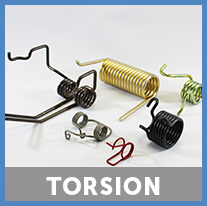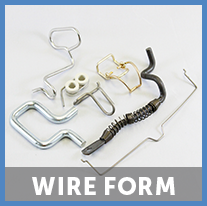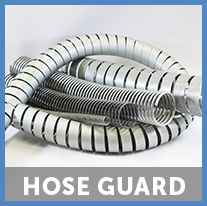Conical springs can be very tricky to design and produce properly. There are many different ways that a conical spring could be set-up to produce a given load and rate. If standard spring design software is used without additional considerations this can lead to higher stresses and failures. These failures can be eliminated with full understanding of the differences between the standard design model and what is often produced.
Rockford Spring Co. was asked to look at a spring assembly that contained a conical compression spring produced by a competitor. The springs were breaking after 10K to 40K cycles. This spring had to press completely flat in the application. This means that the pitch must be designed so that the spring is never overstressed due to too much pitch in any one coil.
RSC was able to look at failed springs and determine that there were two separate failure modes. Some springs were failing in the standard way. When there is too much pitch in any one coil that is being collapsed flat there will be more torsional stress in the coil at that point resulting in a fatigue failure at some point in its life. The higher the stress is, the shorter the average life of the springs will be.
The second failure mode was caused by coils not fitting inside of each other without interference. When a smaller coil flattens out inside the next bigger coil, and OD of the smaller coil is bigger than the ID of that coil, it will cause the larger coil to spread open resulting in a bending stress. The fracture point can be studied under magnification to determine if the failure mode is torsional or bending.
When redesigning for less stress, we would like to add more coils to solve the torsional stress failure by reducing pitch of each coil thereby reducing the stress. Unfortunately, we would also like to reduce the number of coils to have less of a chance to coils interfering with each other and therefore better manage the bending stress failure. With the two failure modes we had to turn to another solution.
We believed that if we could make a much more consistent taper and vary the pitch based on the allowable pitch in each as a function of its OD and the stress produced, we could eliminate the fatigue failure. This meant a lot of patience from our set-up personnel. We were able to go back and forth checking springs in a cutaway mating part and keep tweaking the geometry to maintain the calculated maximum pitch in each coil and maintain consistent nesting of the coils with no coil interference that would cause bending stresses.
The video shows a cutaway view of the mating part and illustrates how close the coils must nest with each other in order to keep the torsional stress low enough for good life.
To further improve the cycle life of the spring a shot peening operation was incorporated into the process line-up. These springs would tangle badly in a bulk shot peening operation, so they are strung end to end on a rod when shot peening to avoid tangling.
Rockford Spring Co. has the determination and expertise to solve our customer's most difficult spring design problems. We believe this is one of the areas that sets us apart from other spring companies.
Testimonial
Mike at MTI Technologies was very pleased with the results of our development work on the conical spring in the case study.
"Your help was instrumental in the success of this project. Your patience and persistence really made this project work. I appreciate all your help and would recommend Rockford Spring and especially your expertise to anyone who needs a spring. Especially if they have a complicated design project and they are having difficulty making it work, I would recommend having you take a look at it. I am confident you would be able to help and make it work for their need."






